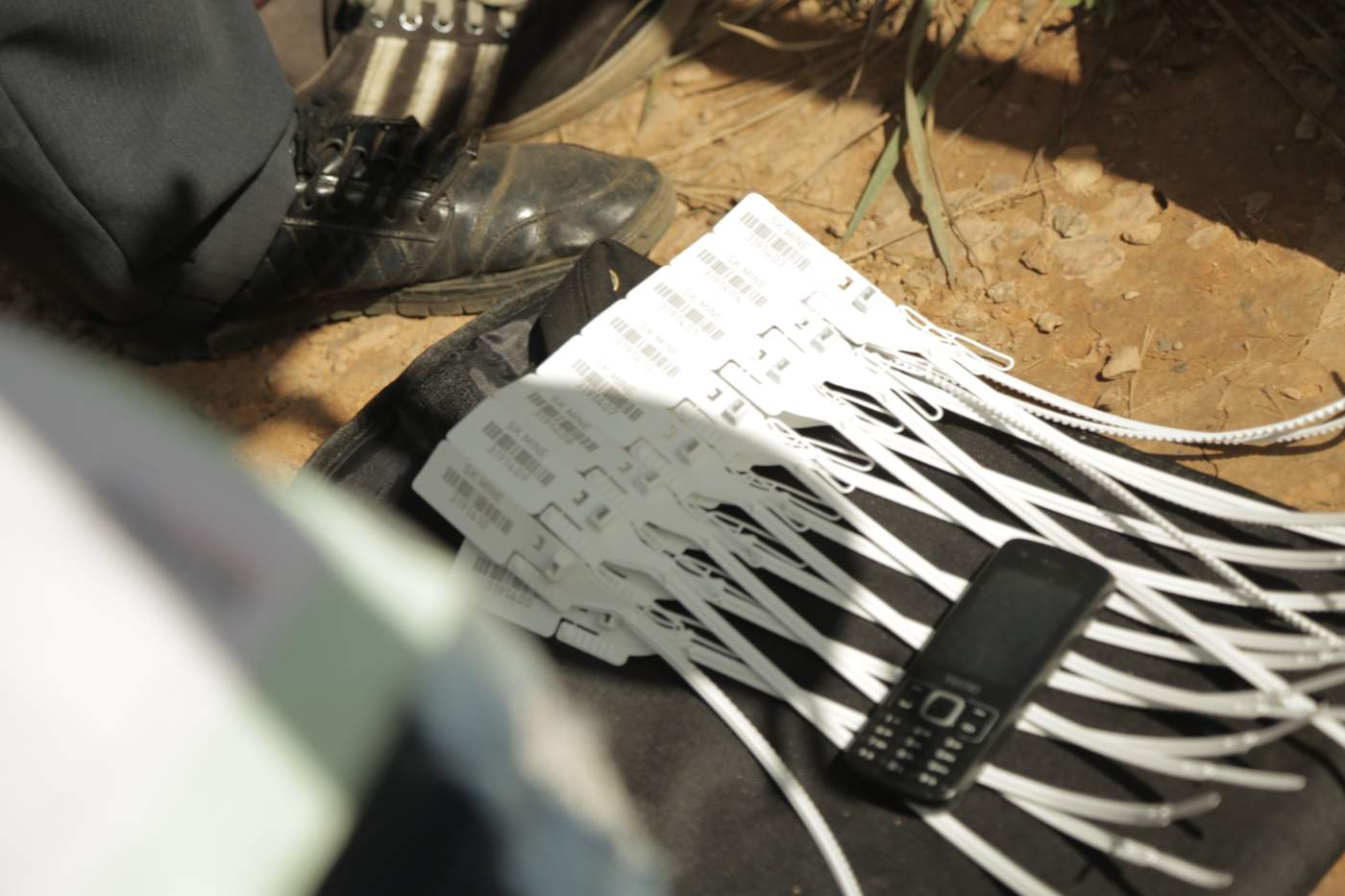NESTLED BETWEEN THE LUSH HILLS OF SOUTH KIVU, EASTERN DEMOCRATIC REPUBLIC OF CONGO (DRC), IS THE VILLAGE OF BRIEMBO.
A couple of hundred makeshift homes made of recovered wood and blue tarpaulin roofs house around 1,200 miners, who work 12 hours shifts in an artisanal cassiterite (tin) mine, just a few hundred metres away.
Like Wakilongo, most miners, from nearby villages in South Kivuor other provinces, are lured by the possibilities of earning a livingfrom mining.

“I used to work in gold mines, but due to a decrease in production, I decided to come here as some of my colleagues told me I could make a living and support my family from working in cassiterite mines,”
said Wakilongo Masumbuko.
THE ILLEGAL TRADE OF MINERALS FUELS CONFLICT
Profits from illegal mining fuel armed groups in the Democratic Republic of the Congo (DRC).
Through intimidation and control over the local populations, armed groups secure control of mines and trading routes that enable them to sell the minerals illicitly on the black market. The profits provide the funding that armed groups need to continue fighting. In addition, the illegal export of these minerals means that no taxes are paid to the DRC government.

A new project by the UN Migration Agency (IOM) is helping certify mines as conflict-free and ensure profits are re-invested into the community.

In 2014, in a bid to increase transparency in the DRC mining sector, IOM, with support from the US Agency for International Development (USAID), launched the Responsible Minerals Trade (RMT) program, which aims to regulate trade in the strategic 3Ts+Gold minerals by establishing conflict-free supply chains, including the setting up of Centres de Negoces (Trading Counters).
“The project promotes the civilian control of the mining sector. It ensures that those mine sites are not in the hands of illegal armed groups or rogue elements within the state security apparatus, and do not employ children or vulnerable women. It also aims to protect the civilian population working on or living around those mining sites,” says Chauzy.

IOM has been supporting this objective by validating mining sites. To date, over 310 mining sites mostly in the east of the country have been validated and IOM hopes to have validated more than 500 mining sites by the end of 2018.

To improve the transparency of the supply chain, the minerals are traced all the way from extraction to wholesale. This is very much in line with the US Dodd-Frank legislation that requires listed US firms trading in the 3Ts+G to prove that those minerals are conflict-free.
The minerals extracted from Birembo’s artisanal mines are usually transported to Nzibira Point de Vente (Sales Counter), just a few kilometres away. Here, they are weighed, put inside pouches, tagged and sealed, under the supervision of an agent from DRC’s Service for the Assistance and Supervision of Artisanal and Small-Scale Mining (SAESSCAM).

“The tagging systems ensures that the minerals’ journey is traceable all the way to the end, when they are exported and sold abroad”, says Dieu Donne Cabwinwe, SAESSCAM Chief of Administration and Finance.


“With IOM’s project, we are helping take back the mines from armed groups and instead generate revenue for our government”, he added.
He collects the taxes paid on each kilogram of raw minerals, while a representative of the mining division of the Provincial Ministry of Mines issues a travel permit that enables the minerals to travel within the country, up to the export point.
This system helps generate much needed tax revenue for the government of DRC.

Nzibira Sales Point, South Kivu: A mining agent fills in the necessary paperwork to pay taxes and receive a 'travel certificate' for the certified minerals to transported to their final sales point.
A levy of 2.2 per cent on the value of each exported container of minerals is added to a ‘basket fund’, which supports community projects such as health centres, schools and roads in the areas where the mines are found.
